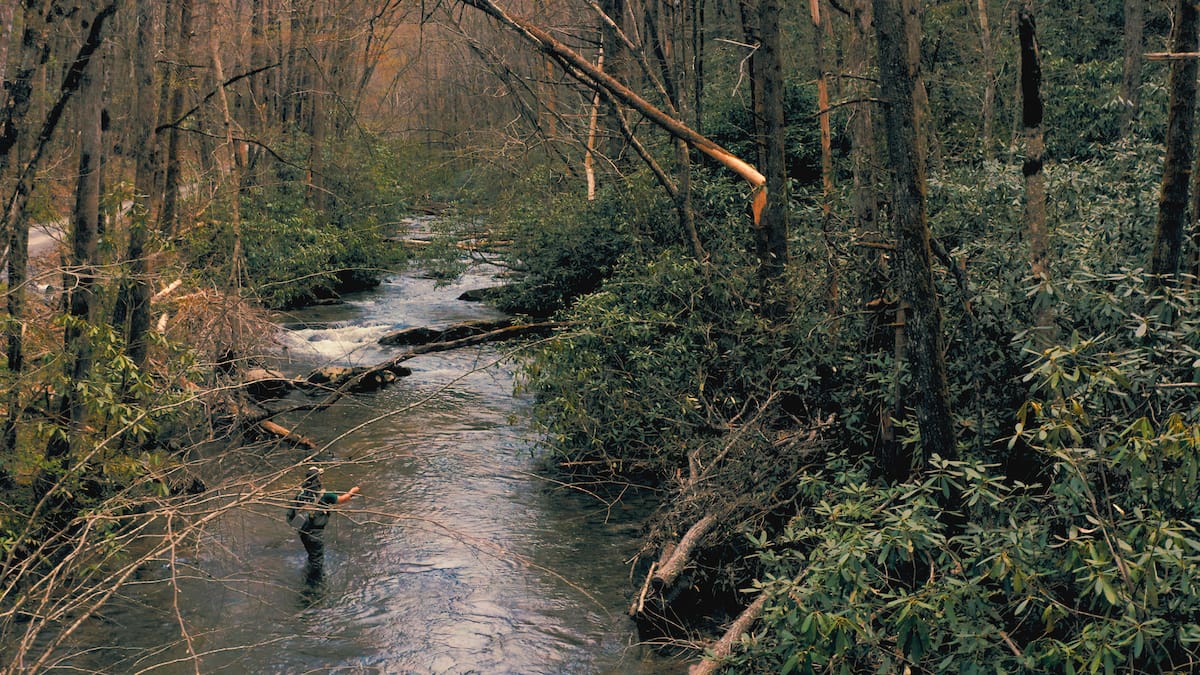
Felling trees in a Tennessee National Forest to replicate what nature used to do
It’s a warm spring morning and the sound of chainsaws is echoing through the Tennessee mountains.
This is hardly an unusual scene, but the mission here is.
This isn’t someone getting a start on next winter’s supply of firewood. It’s a crew from Trout Unlimited, using powerful Husquavarna saws to fell large trees into Sugar Cove Creek, a tumbling mountain trout stream in the Cherokee National Forest.
The trees will stay there, in the creek bed. And trout — as well as communities downstream that will become more resilient to flooding and benefit from cleaner source water for municipal water supplies—will reap the rewards of this work, which is celebrated in the new TU short film, “A Beautiful Mess.”
In Priority Waters watersheds in the Appalachian Mountains—and across the East—crews are undertaking the task of strategically adding woody habitat to streams to replicate what nature did before the era of industrial timber operations, when forests were cut to the ground without regard for the impact on stream health.

As a large tulip poplar fell into the creek with a loud crash, Matt Grove smiled with satisfaction.
“What we are doing out here today is restoring a large wood component that has been missing for probably over a hundred years,” said Grove, the Cherokee National Forest’s fisheries biologist. “Historically this land, before the Forest Service acquired it, was clear-cut and burned repeatedly.
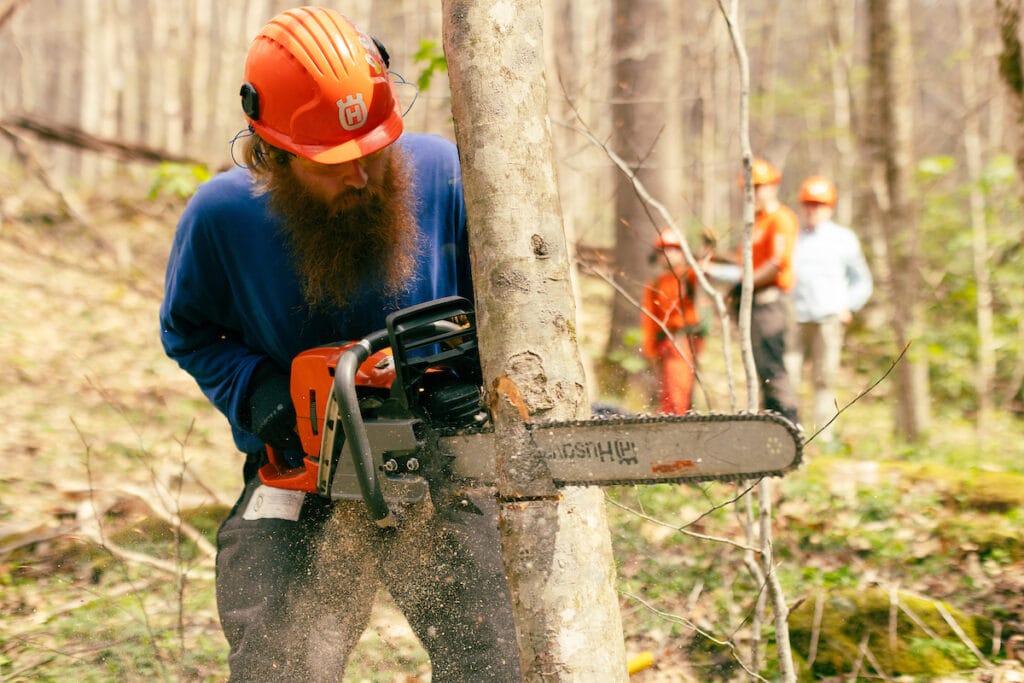
“As a result, a lot of the wood that would have naturally fallen in on its own was removed from the system completely.”
While forests are maturing across the landscape, it would take decades for enough trees to make a discernable impact to naturally fall into streambeds. That’s why TU and the Forest Service are working to jumpstart the process, in part with funding provided in part through the Bipartisan Infrastructure Law, which helped foster a $40 million, 5-year funding agreement to improve watershed health on national forests across the US.
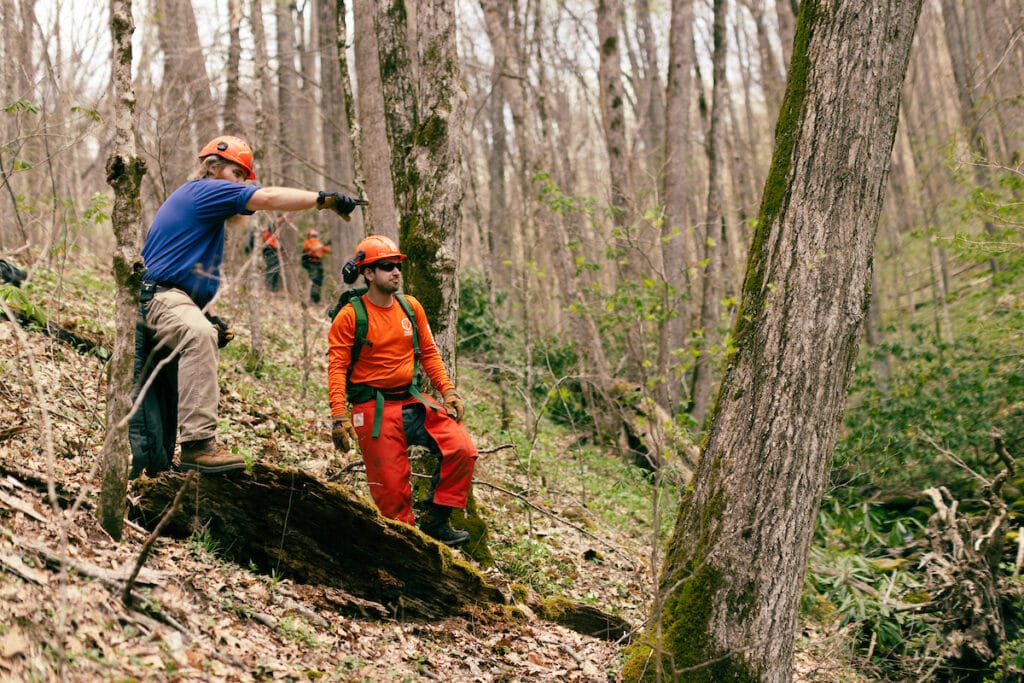
TU’s Southern Appalachian project manager Jeff Wright said the crew under his program added wood to 1.5 miles of streams in 2023. This year the goal is to restore 2 miles on two streams in the Cherokee National Forest
Similarly ambitious large wood restoration initiatives are also underway in West Virginia, New Hampshire, Vermont and Maine.
In those three New England states alone, TU is working toward a goal of completing strategic wood additions on an astounding 60 stream miles through a Regional Conservation Partnership Program with the National Resources Conservation Service.
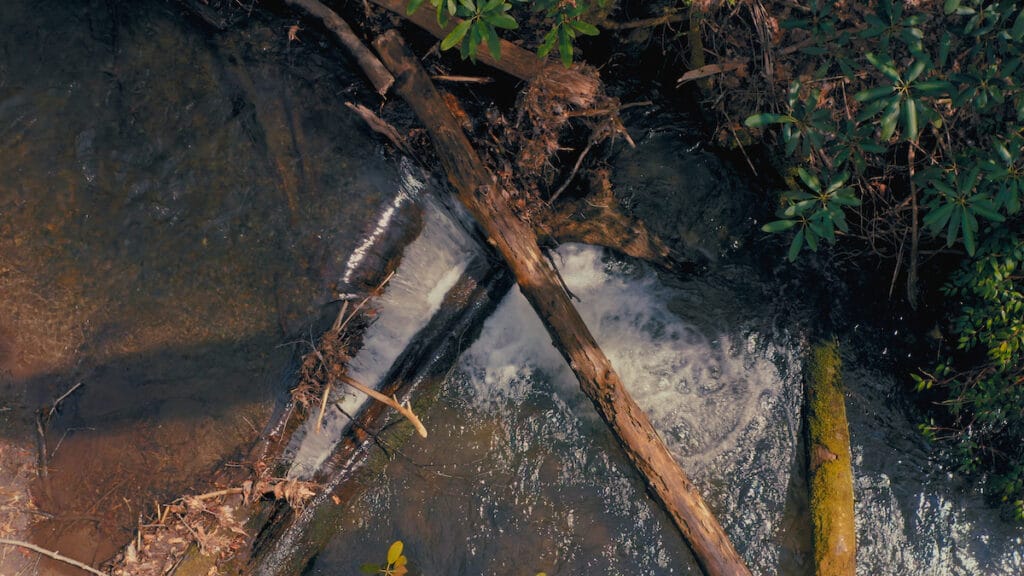
Large trees in streams improve aquatic habitat in several ways. They provide cover, for one thing, protecting trout and other stream-dwelling creatures from an array of predators, be it racoons, herons or even water snakes.
“Everybody that fishes small mountain streams knows that the best place to find fish is right after or right before a downed log,” Wright said. “Missing that means you’re missing the habitat features that are important to trout, like the pools and spawning gravels.”
Leaf litter trapped by trees adds fertility as the organic matter decays, and homes and food for macroinvertebrates such as mayfly and stonefly nymphs. Scouring as currents wind around trees deepens pools and removes silt, exposing streambed gravels that trout need for spawning beds.
Large trees also help downstream communities become more resilient to floods that are becoming more frequent and severe in our changing climate. In streams with a healthy amount of large wood habitat, waters that previously would have rocketed unimpeded until reaching—and possibly damaging—infrastructure such as bridges and undersized culverts is slowed and directed into natural floodplains.
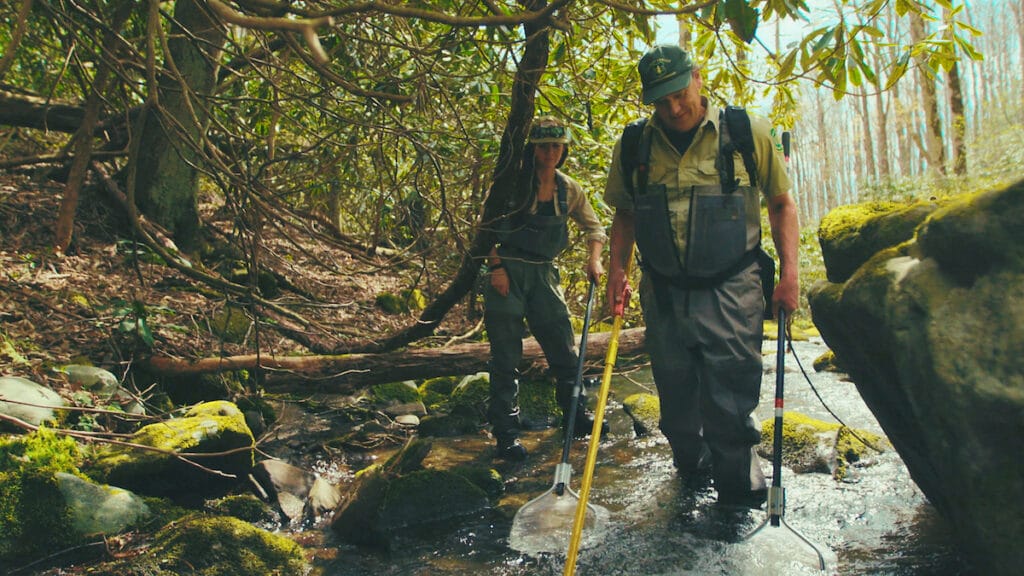
As floodwaters recede, silt is deposited on those floodplains instead of washing into larger river systems that, in many cases, serve as municipal water supplies. That reduces the cost of treating the water, and that savings is passed on to customers.
As it is across the East, the strategic wood-loading work in the Southeast is a team effort. TU crews, often with support from volunteers, survey streams to determine needs. The Forest Service, in addition to providing critical funding support, helps with technical support, including prioritizing streams for work.
Then TU crews, decked out in safety gear, make their way down the streams, felling trees and, in some cases, using a heavy-duty come-along system called a grip hoist to pull downed trees into the ideal position.
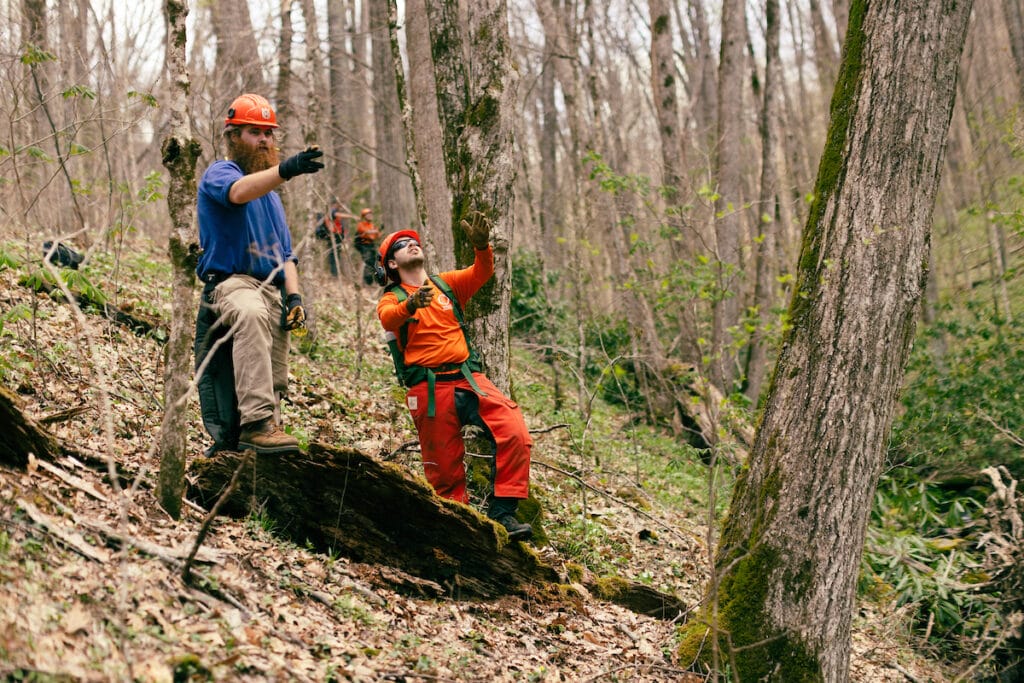
It is slow, hard work.
But it makes a difference, and often quickly.
In Vermont, for example, surveys found that trout populations saw nearly a three-fold improvement in biomass in sections of streams restored with woody additions as opposed to control sections that were not restored.
Grove will be closely monitoring Sugar Cove Creek’s brookies, which were boosted by a recent transplant of native trout from a nearby stream.
After watching the wood crew for a couple of hours, Grove donned a backpack electrofishing unit for an informal survey of the stream while TU volunteer Cassie Spurling netted fish. The effort turned up several colorful mountain jewels. More formal post-restoration surveys will take place in coming years.
Spurling then did a little sampling of her own, in this case with a fly rod and an olive stimulator fly with a small nymph dropper. That worked, too.
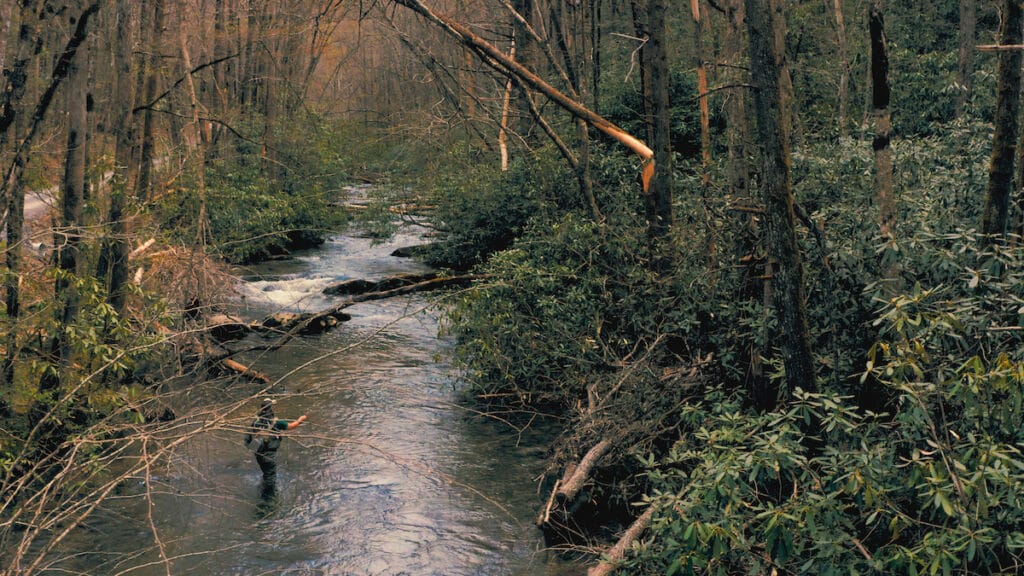
Because she was fishing a section of the stream that the tree-felling crew hadn’t yet reached, the going wasn’t too tough for Spurling. Fishing stream reaches where trees have been added can be more challenging, what with the added need to hop logs or even leave the stream to move around bigger trees.
But while navigating those beautiful messes can be tough, the rewards are worth it.



Comments